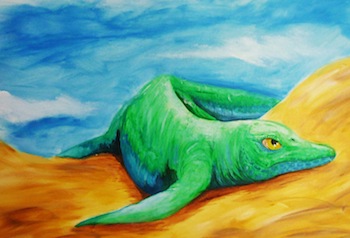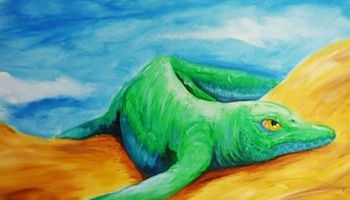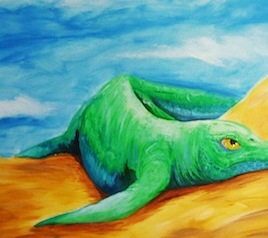
Cartorhynchus lenticarpus, a new species of aquatic reptile described this week, had unusually large flippers that could have enabled limited movement on land. It appears to be an early member of the group that would eventually include dolphin-like reptiles called icthyosaurs. (Image credit: Stefano Broccoli)
Fossil remains discovered in China could shed light on the early evolution of aquatic reptiles, including icthyosaurs. Icthyosaurs were sea-going reptiles whose body shape resembled modern dolphins, but the fossil record has been silent about the land-based animals they evolved from.
The new remains – which date back to the Lower Triassic (about 248 million years ago) – suggest a creature with an icthyosaur-like shape, but which had relatively large flippers that could have enabled limited movement on land, in a similar fashion to modern seals. The creature could be an early member of the group that would eventually include icthyosaurs.
Original research paper published in Nature on November 5, 2014.
Names and affiliations of selected authors


